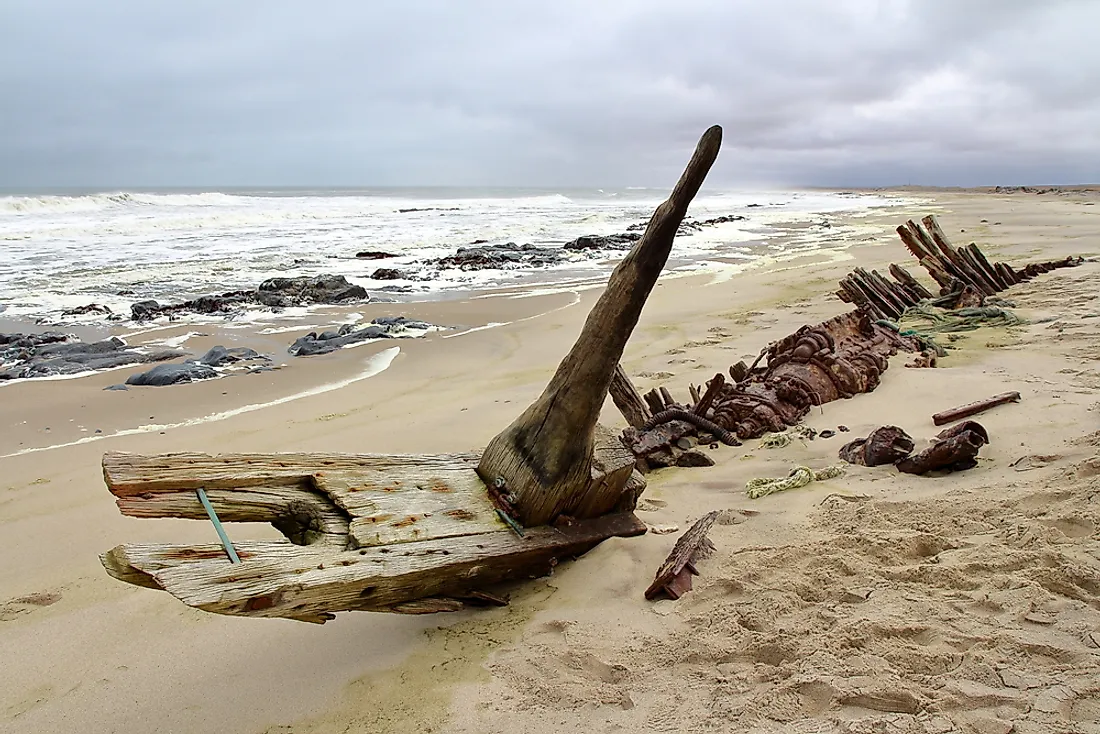The Treacherous Skeleton Coast Of Namibia

What Is The Skeleton Coast?
The Skeleton Coast of Namibia has a very ominous sounding name, and with good reason! This 976-mile stretch of Atlantic coastline is covered in animal skeletons and shipwreck ruins, more closely resembling a graveyard than a beach. This section of the coastline is situated along the northern edge of Namibia, just south of the border of Angola, between the Kunene and Swakop rivers. The Skeleton Coast has also been called the “Land God Made in Anger” by the Bushmen and the “Gates of Hell” by Portuguese explorers.
Why So Many Skeletons?
Why exactly does this particular beach have such a high number of skeletons and shipwrecks? The answer lies in the ocean currents running just off the coast. The Benguela current carries its cold waters up from Cape Point in the south, colliding with the warm air located off the coast of the Namibian Desert. This extreme mix of temperatures creates a heavy fog that covers both the beach and the ocean. In addition, strong winds blow from land to sea, resulting in heavy waves along the beach. These conditions can best be described as harsh and hostile; they are responsible for the high number of shipwrecks and animal carcasses on shore.
Life On The Skeleton Coast
Given its inhospitable climate and conditions, one can imagine that life on the Skeleton Coast is not abundant. With an average annual rainfall of .39 inches, the plants that do manage to survive here are kept alive by the moisture of the fog. Insects here also rely on the fog as well as decomposing plant material that blows into the area from the inland. The Skeleton Coast is located within a 6,200-square mile national park of the same name. Areas of the park located further away from the beach have some larger animal populations, such as giraffe, lion, springbok, black rhinoceros, and baboons. These animals are able to survive along the river which provides freshwater, vegetation, and a reliable food source.
Wrecks Found Along Skeleton Coast
Some of the wrecks found along the Skeleton Coast are more well-known than others.
One of these is the Eduard Bohlen, which ran ashore in 1907. This ship is of German origin and was headed from Swakopmund to Table Bay when it met its demise. The Eduard Bohlen is located approximately 1,640 feet from the water’s edge. Visitors often wonder how the ship made it to the middle of the desert, but the truth is that it has not always been located so far away from the ocean. In fact, the desert sands have blown in around the ship over time, creating a wider stretch of beach and making it appear as if the ship wrecked in the middle of the sand.
Another famous shipwreck located here is the Dunedin Star, which ran aground in 1942. This ship was carrying supplies for the Allied forces and 21 refugees fleeing London during World War II. On its course, the Dunedin Star collided with an underwater obstacle, stranding the boat, its cargo, and its passengers over 1,000 feet from the shore. This incident initiated what would become a very unsuccessful rescue mission. Two vessels were sent to retrieve the passengers and drop off supplies. Both the warplane and the tugboat wrecked during their attempts. The remains of all 3 can still be seen today.







